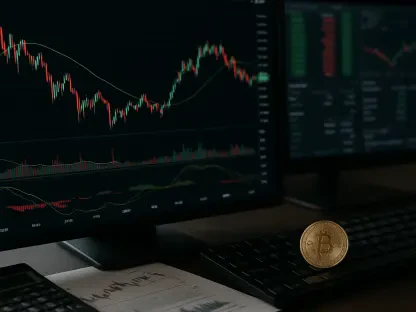Persistent inflation continues to shape the economic landscape, significantly impacting consumers and businesses as the year 2025 approaches. With recent trends indicating a rising inflation rate, many are grappling with higher prices for essential commodities. Lindsey Piegza, chief economist at Stifel Financial, breaks down what this means for the future. Besides inflation, the broader economic trends also include the integration of artificial intelligence (AI), significant challenges in the housing market, and the looming risk of stagflation.
Inflation Trends and Consumer Impact
Recent Inflation Trends
The recent trends in inflation have shown a consistent rise, with a 3% annual increase reported last month. Starting from a 2.4% increase in September, this continuous growth in inflation represents the fourth consecutive month of such increments. As Americans face higher prices for essential commodities like groceries, gas, and housing, the financial strain becomes more evident. Lindsey Piegza, the chief economist at Stifel Financial, highlights these concerns, noting how they influence economic activities and decisions. The persistent rise in inflation has economic experts closely monitoring and strategizing on best practices to counteract these pressures.
The 3% annual increase marks a significant jump and directly impacts household budgets. Consumers are finding it increasingly challenging to manage their finances, given the rising costs of essential items. This scenario paints a concerning picture for the near future, as continued inflation could hinder purchasing power and overall consumer confidence. Over time, this may lead to broader economic consequences, including altered spending patterns and potentially reduced economic growth if left unaddressed.
Consumer Financial Strain
Despite some improvements in income levels, inflation remains a burden, subtly eroding purchasing power and careful financial planning. Real income growth has turned positive since 2023, reflecting a modest relief for consumers. Nevertheless, the persistent financial strain cannot be ignored. Factors such as higher prices, increased interest rates, and the resumption of student debt payments contribute to a noticeable slowdown in consumer spending. Piegza describes this scenario as a “second derivative decline,” signaling that while spending is still on the rise, the rates of increase are gradually declining.
In simpler terms, the financial landscape is shifting, causing consumers to reconsider their spending habits. The shock from higher prices is palpable, leading many to adjust their budgets and cut back on discretionary spending. The collective effect of these individual adjustments echoes through the economy, highlighting the ripple effects of inflation on overall economic health. As the year 2025 approaches, these challenges present a critical area for economic policymakers and planners to address, ensuring stability and growth.
Disparity in Consumer Spending
The impact of inflation varies markedly across different households and demographic groups, contributing to disparity in consumer spending patterns. Some households are experiencing significant financial pressure, while others remain relatively unaffected. This disparity underscores the uneven distribution of economic burdens within the populace. Piegza acknowledges this phenomenon, suggesting that addressing the varied needs of all consumers poses a considerable challenge to policymakers.
This uneven impact of inflation is due to several factors, including varying income levels, debt obligations, and spending habits. Households on fixed or lower incomes tend to feel the pinch more acutely, while those with more substantial financial buffers can better absorb higher costs. This imbalance necessitates targeted interventions that consider the diverse economic realities faced by different groups. Moving forward, creating policies that support more vulnerable populations while fostering overall economic stability remains a key focus for economic strategists.
Business Adaptation and AI Integration
AI and Technology Adoption
A critical trend discussed is the businesses’ increased reliance on artificial intelligence (AI) and advanced technology to manage escalating cost pressures. As businesses navigate the challenges presented by inflation, many have turned to AI to streamline operations and reduce human labor costs. Piegza notes that this shift can have a profound and far-reaching impact on the labor market, both domestically and internationally. In 2025 alone, an estimated 12 million jobs could be replaced by technology, underscoring the significance of this trend.
The adoption of AI extends beyond merely replacing human labor; it also entails significant shifts in operational efficiency and decision-making processes. By leveraging AI, companies can optimize supply chains, enhance customer service, and analyze vast quantities of data to make informed decisions. This reliance on technology, however, presents a double-edged sword, as it also necessitates a workforce skilled in emerging technologies. Preparing employees for these changes involves substantial investment in retraining and skill development programs.
Workforce Adjustments
A survey conducted by Stifel Financial revealed that 50% of American businesses have already adjusted their workforce due to AI adoption in the past 12 months. This trend is set to continue, with 80% of businesses planning to make similar adjustments within the next 12 to 18 months. The increasing incorporation of AI and technology into business operations is reshaping the labor market, leading to significant shifts in employment patterns and job availability.
These workforce adjustments are not confined to job eliminations; they also encompass transformations in job roles and requirements. As businesses integrate more AI technology, roles that previously involved manual or repetitive tasks are either evolving or becoming obsolete. Consequently, there is an imperative for both current and prospective employees to adapt by acquiring new skills relevant to an increasingly digital economy. This transition phase poses challenges but also offers opportunities for those willing to embrace the change and invest in necessary training.
Impact on Labor Market
The movement towards widespread AI and technology integration in businesses is expected to have a noteworthy impact on the labor market. The replacement of human labor with technology could lead to substantial job losses, but it also creates potential opportunities for individuals to develop new skills that align with the evolving job market. This trend emphasizes the importance of workers adapting to remain competitive in an increasingly automated job environment.
Mitigating the adverse effects of this shift requires proactive measures from both the public and private sectors. These might include educational programs focused on technical skills, investment in continuous workforce development, and support for sectors likely to experience greater disruption. As this transformation progresses, the adaptability of the labor force becomes crucial for ensuring that the benefits of technological advancements are widely and equitably distributed.
Housing Market Challenges
Housing Affordability Crisis
The housing market has also been severely impacted by inflation, resulting in what Piegza describes as a “massive lockout effect.” Housing affordability has plummeted to near-record lows, presenting significant barriers for potential homebuyers trying to enter the market. This scenario is exacerbated as current homeowners face the prospect of higher interest rates on new mortgages, discouraging them from selling their properties.
As a consequence, potential buyers and sellers find themselves in a stalemate. While the demand for homes remains, the affordability issue prevents many from making purchases. Those who already own homes are reluctant to move, knowing the financial implications of doing so. This dynamic contributes to a pronounced stagnation in the housing market, which poses broader economic challenges. Addressing this issue will require concerted efforts to find solutions that enhance affordability and support market fluidity.
Lock-In and Lockout Effect
The dilemma in the housing market leads to both a lock-in and lockout effect, complicating the challenges for individuals looking to buy or sell homes. The lock-in effect occurs when current homeowners are reluctant to sell due to the prospect of higher interest rates on new mortgages. Concurrently, the lockout effect prevents potential buyers from entering the market because of elevated prices and diminished affordability.
This dual impact restricts the housing market’s dynamism and has broader implications for economic mobility and growth. Constricted housing turnover means fewer opportunities for both new and existing homeowners to find appropriate accommodations. This situation underscores the necessity for policy interventions aimed at stabilizing mortgage rates and expanding affordable housing options to alleviate market pressures and support economic health.
Broader Housing Market Impact
The housing affordability crisis highlights the broader challenges posed by inflation, affecting not only potential homebuyers but also current homeowners. The combined lock-in and lockout effects are creating a stagnant housing market, with limited opportunities for buying and selling properties. This stagnation underscores the pressing need for policy interventions to address housing affordability and market dynamics, fostering a healthier economic environment.
Broader implications of this crisis extend to the overall economic activity, influencing sectors dependent on housing market vibrancy. Construction, home furnishing, and real estate services all face knock-on effects from a sluggish housing market. Facilitating a more dynamic and accessible housing market is essential for stimulating economic growth and ensuring that housing remains within reach for a wider segment of the population. Effective policy measures could alleviate some of these challenges and support a more robust economic recovery.
Recession and Stagflation Risks
Recession Concerns
Piegza also addresses the risk of a recession in 2025, noting that while the likelihood has decreased from previous years, the threat remains significant. Piegza’s model estimates a 15% chance of entering a recession within the next 12 to 18 months. This potential for a recession underscores the necessity for careful economic management and proactive policy interventions to stave off economic downturns.
Strategic fiscal and monetary policies will be crucial in mitigating recession risks. Governments and central banks must balance stimulating economic activity with controlling inflation to maintain stability. The looming possibility of a recession highlights the delicate equilibrium necessary in economic policy to foster sustainable growth while preventing sharp downturns. Policymakers must remain vigilant and responsive to the economic indicators signaling potential instability.
Stagflation Threat
Persistent inflation continues to shape the economic landscape, significantly impacting consumers and businesses as the year 2025 approaches. With recent trends pointing to a rising inflation rate, many are coping with higher prices on essential goods and services. Lindsey Piegza, chief economist at Stifel Financial, explains what this could mean for the economy moving forward. Beyond inflation, other major economic trends include the growing integration of artificial intelligence (AI), ongoing struggles within the housing market, and the looming threat of stagflation. This combination of factors creates a complex economic environment that presents both challenges and opportunities. Businesses may need to adapt to increased costs and rapidly changing technology, while consumers face financial strain from higher living expenses. As these dynamics evolve, stakeholders at all levels will need to strategize and innovate to navigate the uncertainties that lie ahead.









